Items
topic_interest is exactly
Oregon
-
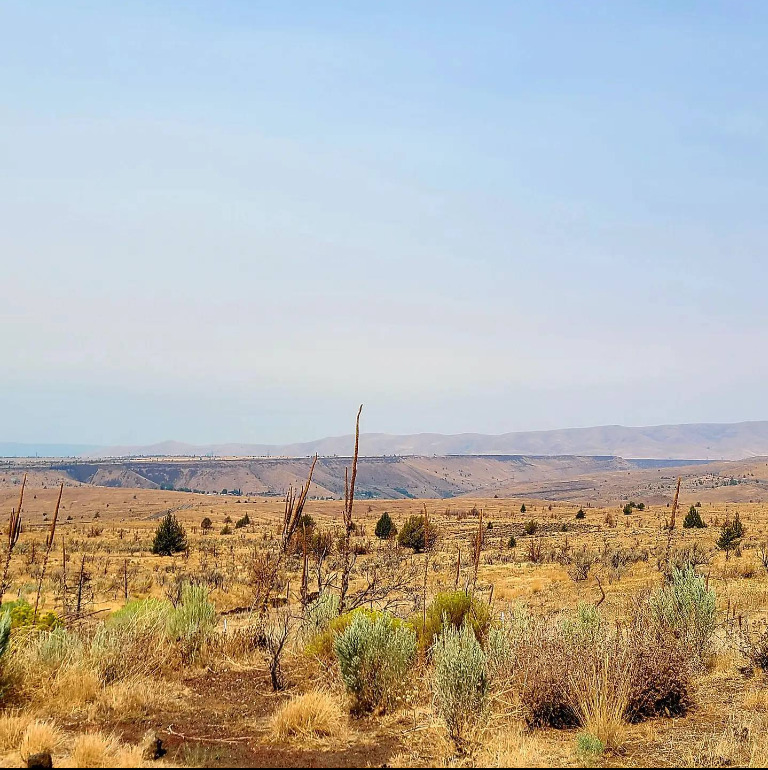 2021-08-15
2021-08-15Pandemics, Wildfires, and Climate Change
The Covid 19 Pandemic is and was a transformative event representing history in the making. The state of Oregon and particularly Portland witnessed a trifecta of converging crises beginning with the lockdown on St. Patrick’s Day in 2020. That summer was one of the hottest in recorded history and saw the city and state divided in smoke-filled chaos. The literal last words of “I can’t breathe” uttered by George Floyd were being chanted in the streets downtown as wildfires raged in all corners of the state, set against the backdrop of a global pandemic. Everything felt surreal and the tension in the city was like a powder keg. By the following summer some advancements had been made, the first round of vaccinations administered, but the same underlying issues were present in Portland. Houselessness, fractured political ideologies, and Far-Right and Far-Left members clashing in an invisible maelstrom on the Willamette River. My husband and I had adhered to the very stringent guidelines and protocol set by both the city and state to the letter. For a bit of context, my husband worked on the front line as a department manager at a grocery store and wore a mask for eleven hours at a time often six days a week for a year and a half, while I volunteered at the Red Cross and held down the home front. In August of 2021, we finally decided that we needed to get out of town, so we grabbed the dog and set a course for the Crooked River in Central Oregon. It was a two-week period of sheer peace and glory bookended by fear and anger at the negligence of fellow humans. We camped on the river and practiced mindfulness and being present every day, breathing deeply the fresh air ushered in by a strong breeze from the East. The “going there” and “going home” portions were marred by anti-mask protestors with weapons arguing about state’s rights, as death toll numbers were rising. The fires had already burned over a million acres with no signs of slowing down, and the reality of Portland’s social justice issues did not disappear just because we did. The experience left us feeling gratitude for the opportunity to explore, our good health, and open minds, it was our 18th wedding anniversary, in which porcelain is traditionally given as a gift. Ironic, given the fact that not only is porcelain extraordinarily beautiful but also incredibly delicate, a perfect representation of the state of things during the summer of 2021. -
2020-04-10
The Whir and the Waft
When schools shut down, there was a transition period where teachers waited to find out what they would need to do next. When that was decided, our work week was drastically changed. To achieve equity, we gave 30 minute lessons over Google Meets to anyone who wanted to show up twice a week. This meant a lot of free time--which meant reading! I went to the local bookstore and there was a line: only 5 people allowed in the massive 1-block building at a time. When I was permitted entrance to the silent space, I had to accept hand sanitizer from an automatic dispenser. This was not my first encounter with the substance, but it was the most memorable. The machine whirred and spit an enormous amount into my hands, completely filling my palms with watery, reeking sanitizer. I looked around for a towel or space to shake it off...there was so much! It began sliding through my fingers and dripping down my arms, a cold, slow trickle that spread the hospital scent with it. I frantically began rubbing my hands, but even so, huge glops of it splattered on the linoleum floor as I quickly walked to spread the leaking substance more thinly over the floor and avoid creating a puddle. The sterile and unpleasant smell stuck to my skin and followed me throughout the store, into my car, and to the end of my day. This will be hard to forget, and it made me buy my own, thicker hand sanitizer that I could control, and that smelled like pineapples and mango, and raspberry lemonade (it took some time to order, though, because so many companies were out of product). I didn't realize then, in April 2020, that machines like this would be everywhere, or that upon return to my classroom the next April, I would have my own gallon jug of it to offer students. The smell and the feel of that bookstore experience still make me cringe, yet this scent and substance have been normalized and their presence is expected and sought out. The whir and the waft of alcohol will not leave my senses, and, though they tell an important sensory history of this pandemic, I wish they would. -
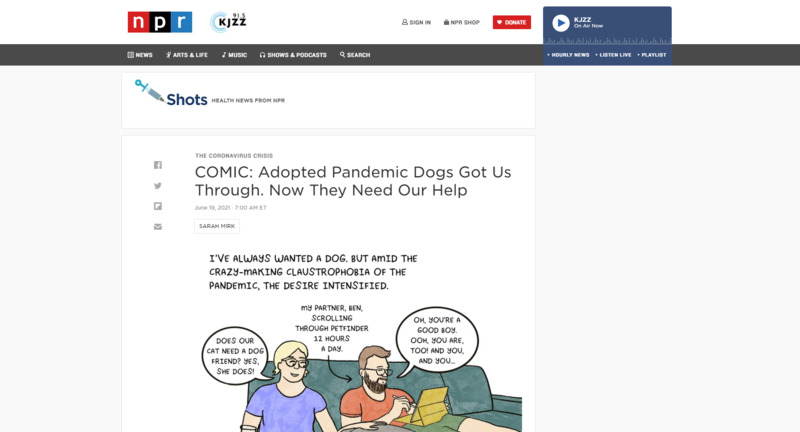 2021-06-19
2021-06-19Pet Adoption Comic NPR
This comic is fun, engaging, and informative. It talks about the increase in pet adoption during the pandemic and how pets helped a lot of people deal with emotional trauma. It cautions would-be pet owners not to jump blindly into adopting and to think about what will happen when life returns to normal. Separation anxiety can be difficult for pets to deal with, and owners need to have a plan for that. -
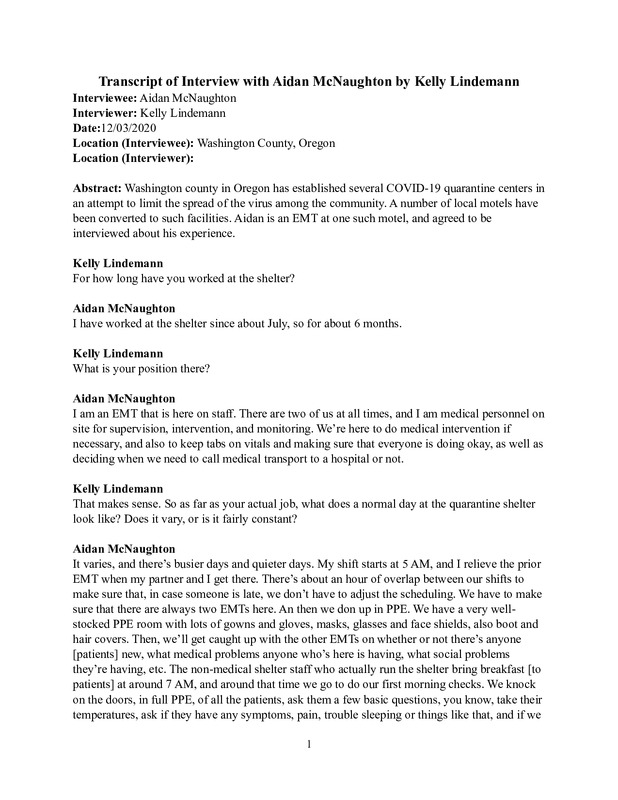 12/03/2020
12/03/2020Aidan McNaughton Oral History, 2020/12/03
Washington county in Oregon has established several COVID-19 quarantine centers in an attempt to limit the spread of the virus among the community. A number of local motels have been converted to such facilities. Aidan is an EMT at one such motel, and agreed to be interviewed about his experience. -
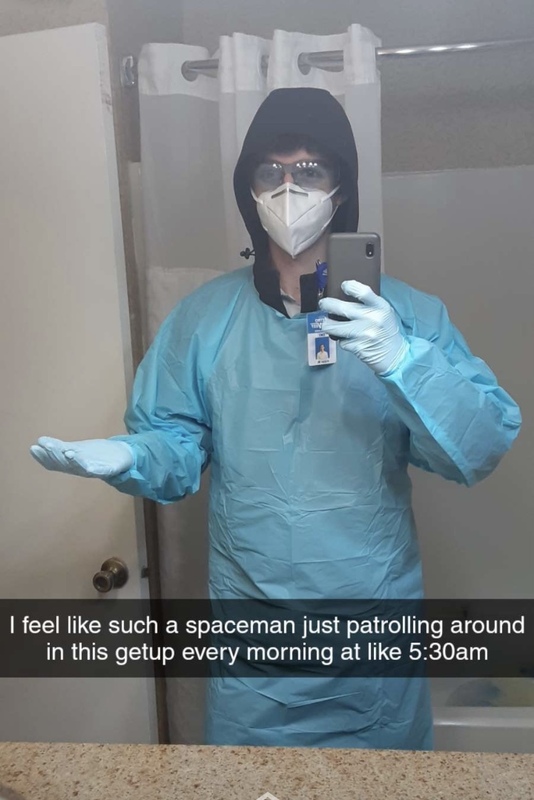 2020-10-23
2020-10-23Voluntary Isolation Motel EMT
Several counties across Oregon have coordinated with local motels to establish voluntary isolation shelters in an attempt to curb the spread of COVID-19. Each location is staffed with city personnel to manage admittance and discharge, while EMTs on staff conduct routine medical monitoring to patients. My boyfriend works in one of these shelters, and sent me this picture of him in his full PPE getup before making morning rounds. The shelter's capacity varies a lot week by week, and anywhere from 1-20 COVID positive patients may be staying there at any given point. This particular motel intakes prisoners who need to do a 2 week quarantine before being released, but also serves non-incarcerated people who have tested positive. -
 2020-11-05
2020-11-05EXPLAINER: Have election-related protests materialized?
These images and the article they came from show the continuing effect of the virus and the pandemic. Even in the protests during the elections, some people are wearing masks. This election is happening months after the pandemic began. -
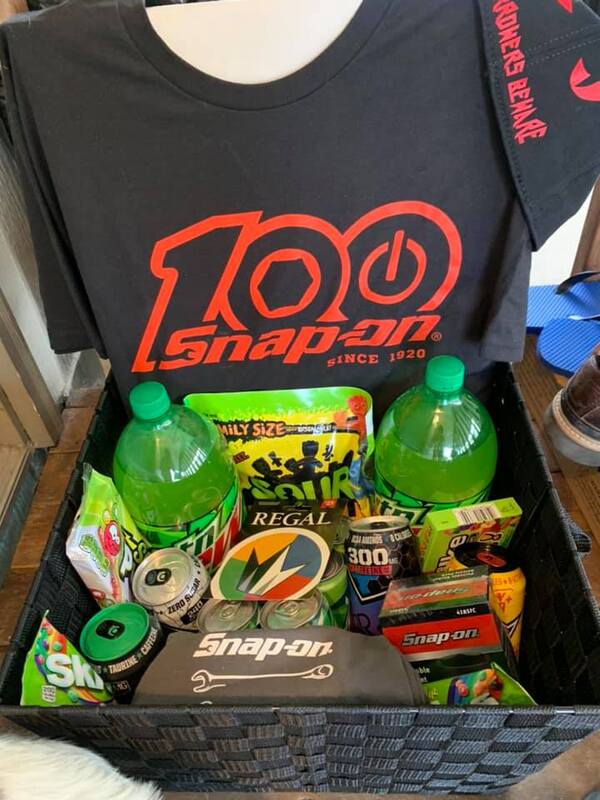 2020-11-06
2020-11-06Adopt a Senior 2020
In my hometown of Corvallis Oregon, after March 13th the class of 2020 never entered the doors of our high schools again. Anything we left in our lockers and classrooms was put in garbage bags and handed to us from 6 feet away. Our graduation ceremony was a parade of cars through the backroads of my hometown. A mother at my high school decided this wasn’t fair, we needed to have another type of celebration. Mealoha McFadden created a facebook group to “adopt” 2020 seniors in our county and shower them with gifts and praise. Many people got their favorite candies, snacks and others got starter kits for college. In my adoption care package, I got a tool set for my dorm, lots of candy, my favorite soda and a note praising my accomplishment. Although times were especially hard in my hometown, there was a glimmer of happiness when a senior got their gifts. -
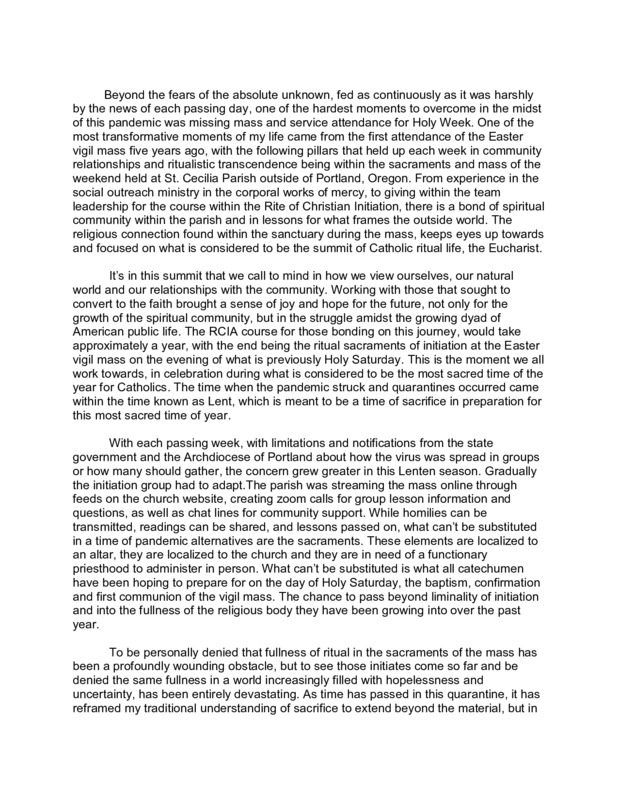 2020-08-11
2020-08-11Holy Saturday
This is a story about the quarantine separating me, and most importantly others in my community, from participating not only in the sacrifice of the mass but also catechumens from receiving the sacraments of initiation during Holy Week. It's the most sacred time of the year for Catholics. It marks not only the anniversary of a deeply changing experience for me, but it's the time when I can see candidates enter the body of the church fully, and for that body to either be baptized or renew their baptismal vows. -
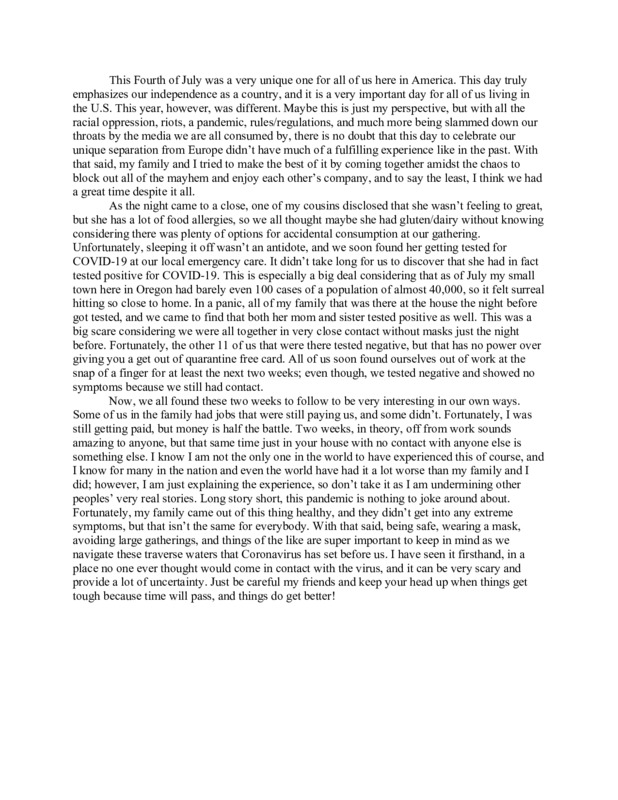 2020-07-04
2020-07-04COVID-19 Family Quarantine
It shows the impact of this virus on my family's lives as well as my own. I feel my experience is one story to the many that can provide context on the interesting times we live in. -
 2020-06-15
2020-06-15Gov. Brown asks for release of some prison inmates to slow virus spread
One of the hardest hit populations with regards to covid-19 are corrections facilities. In an effort to slow the spread in the nations overcrowded facilities government officials have released some inmates early. The public has had mixed reactions to this policy. While the government officials are not releasing inmates that pose a danger to the public people are still worried. This article covers the story in Oregon and the comments add to the conversation. -
 2020-05-26
2020-05-26Social Distancing Half Marathon
I was supposed to attend the Bend Half Marathon last April in Oregon, until the COVID-19 pandemic canceled the event. The Bend Half Marathon decided to host a virtual half marathon. It sent me a Social Distance Edition Half Marathon run bib. After I submitted my run results, the marathon mailed me a wooden medal.
